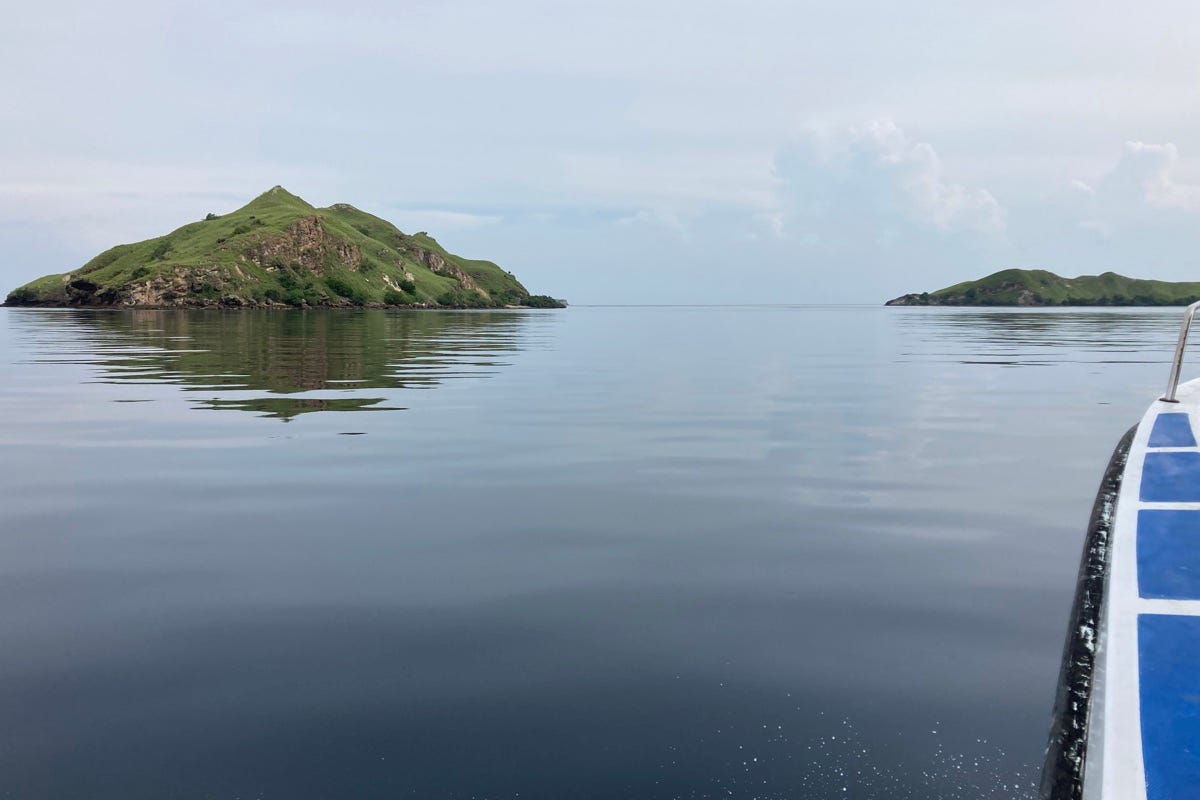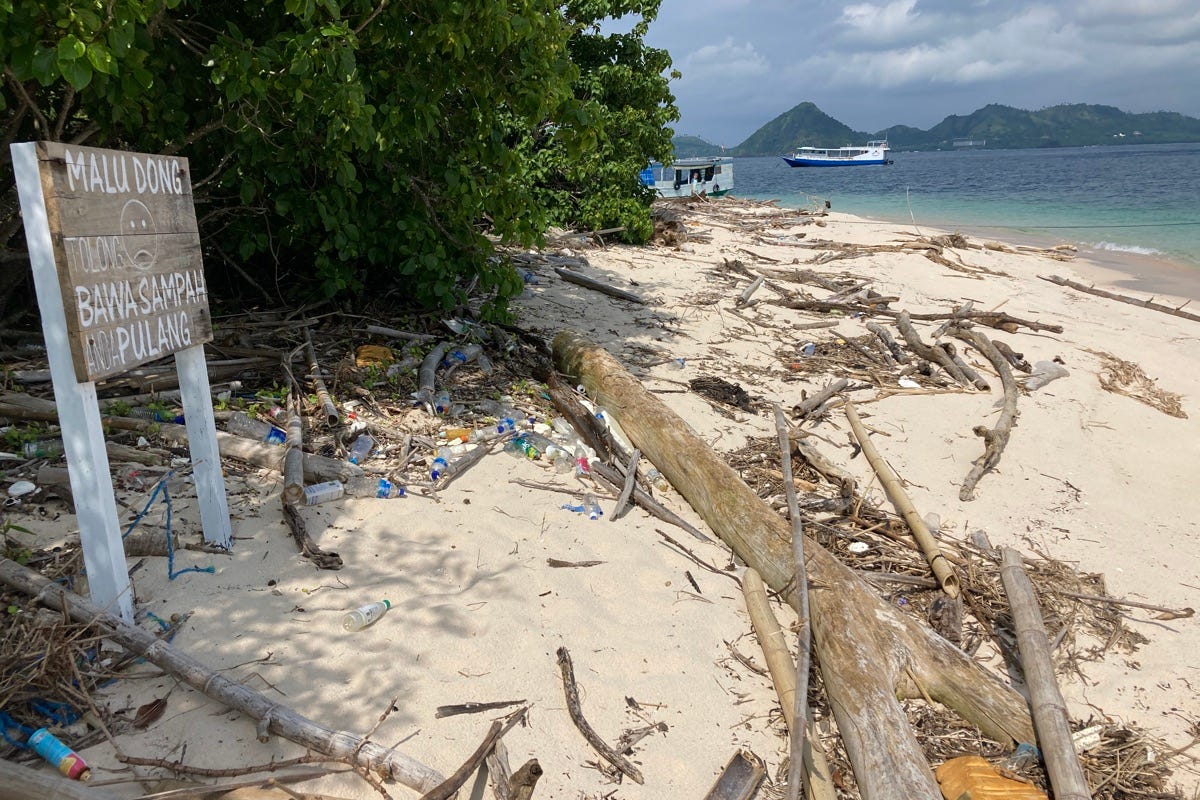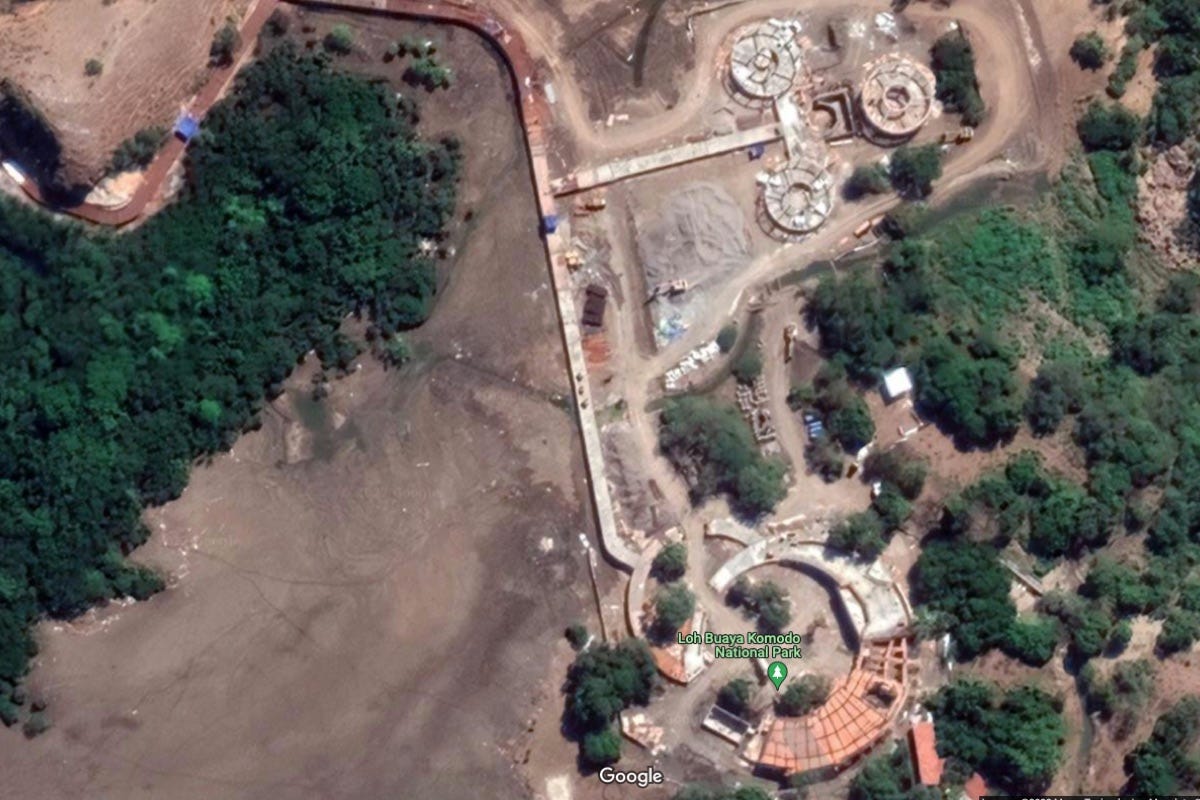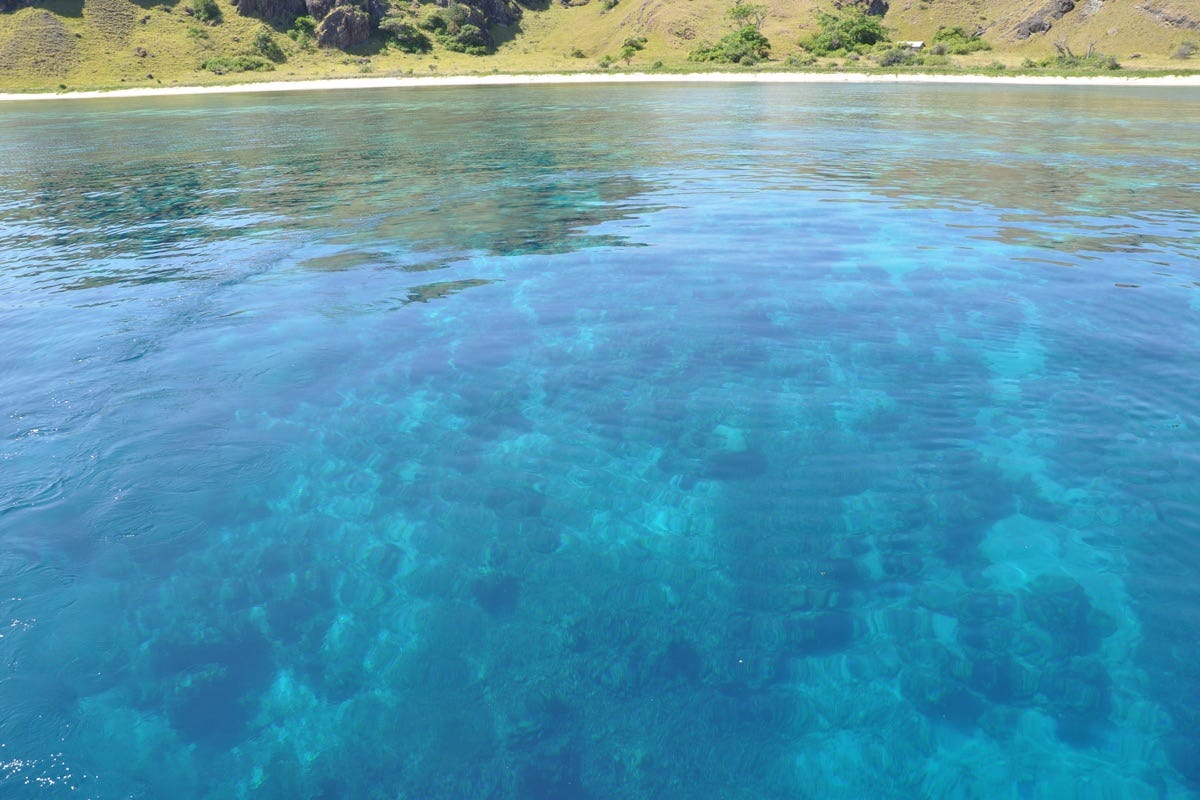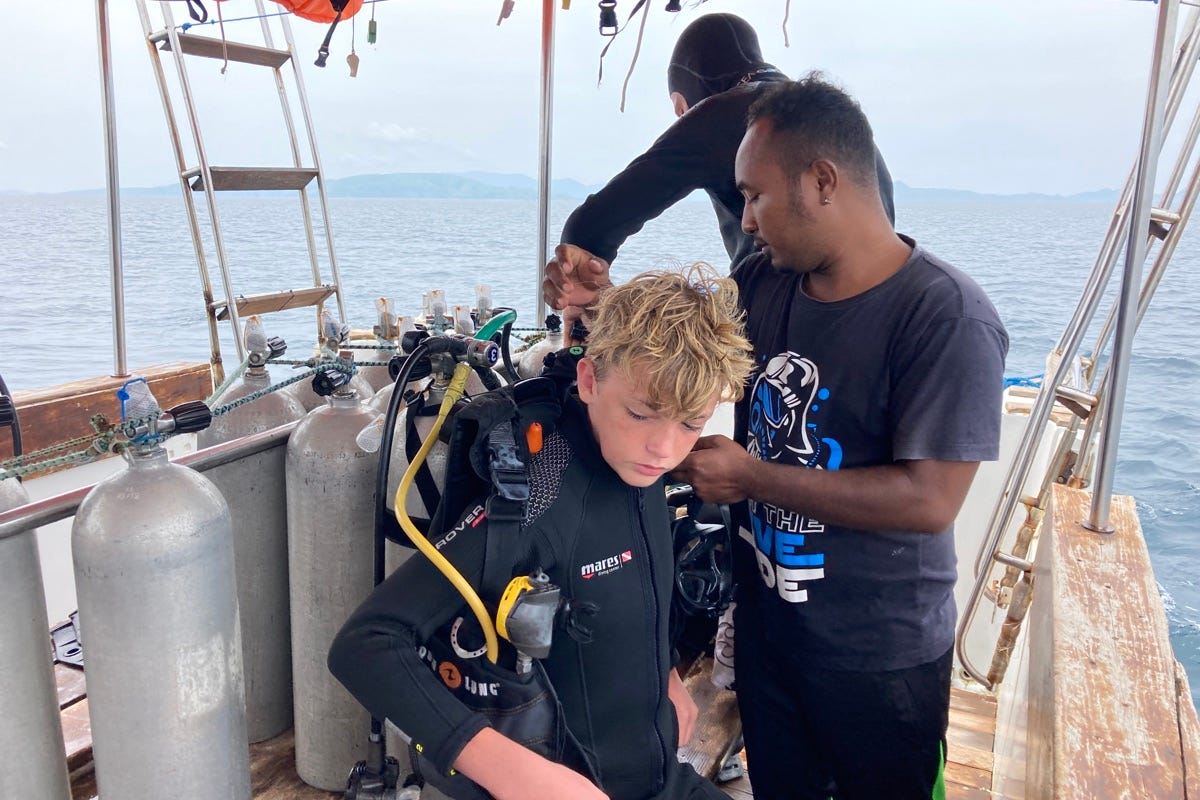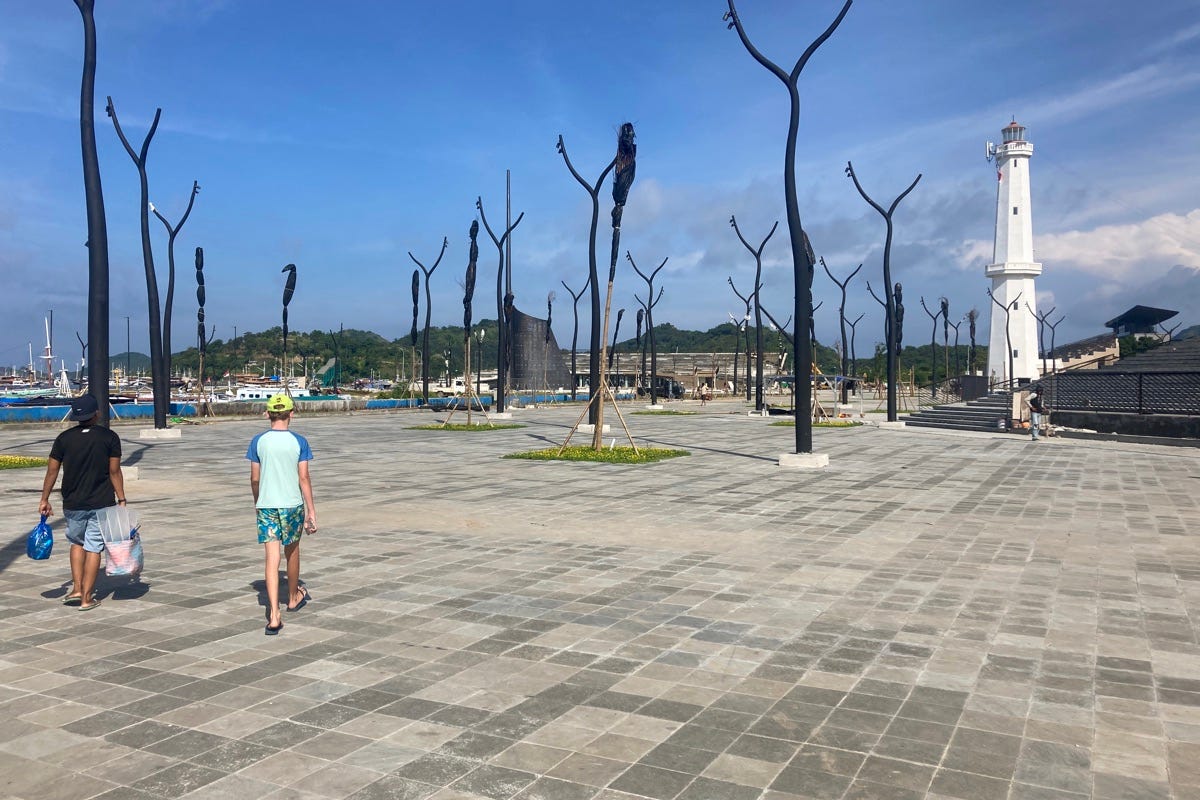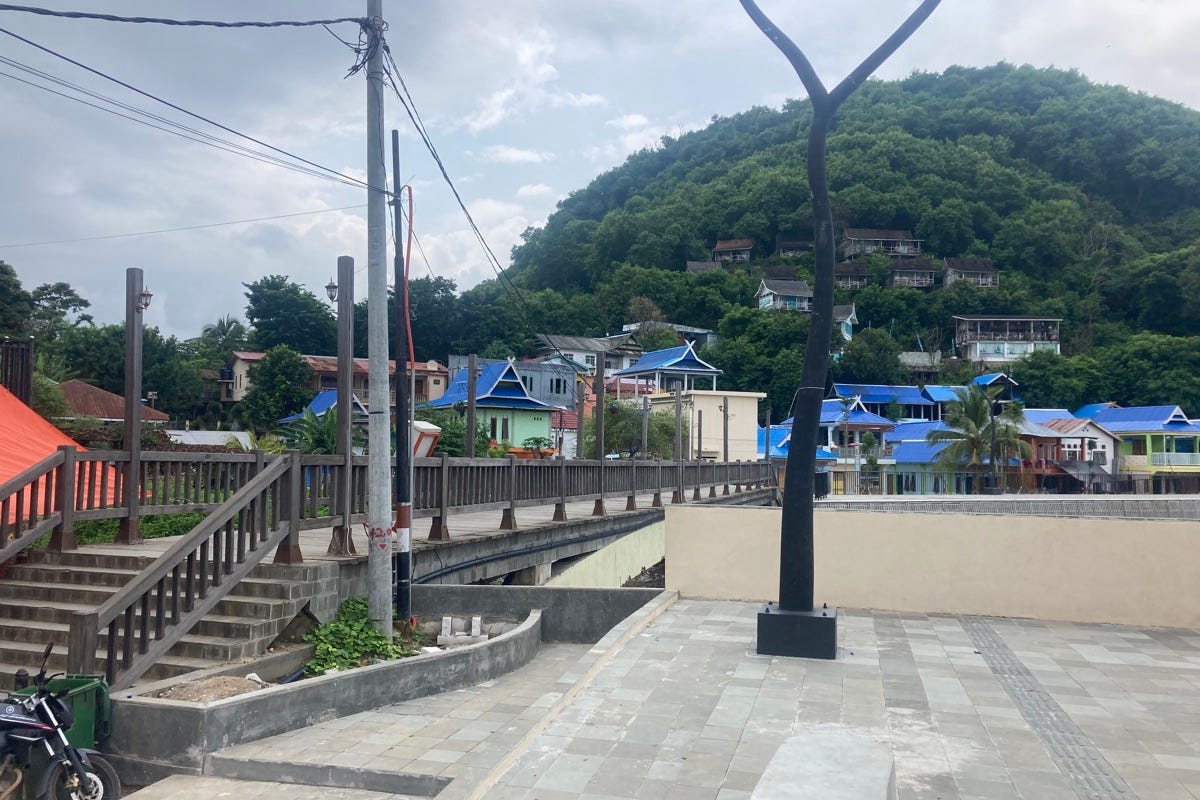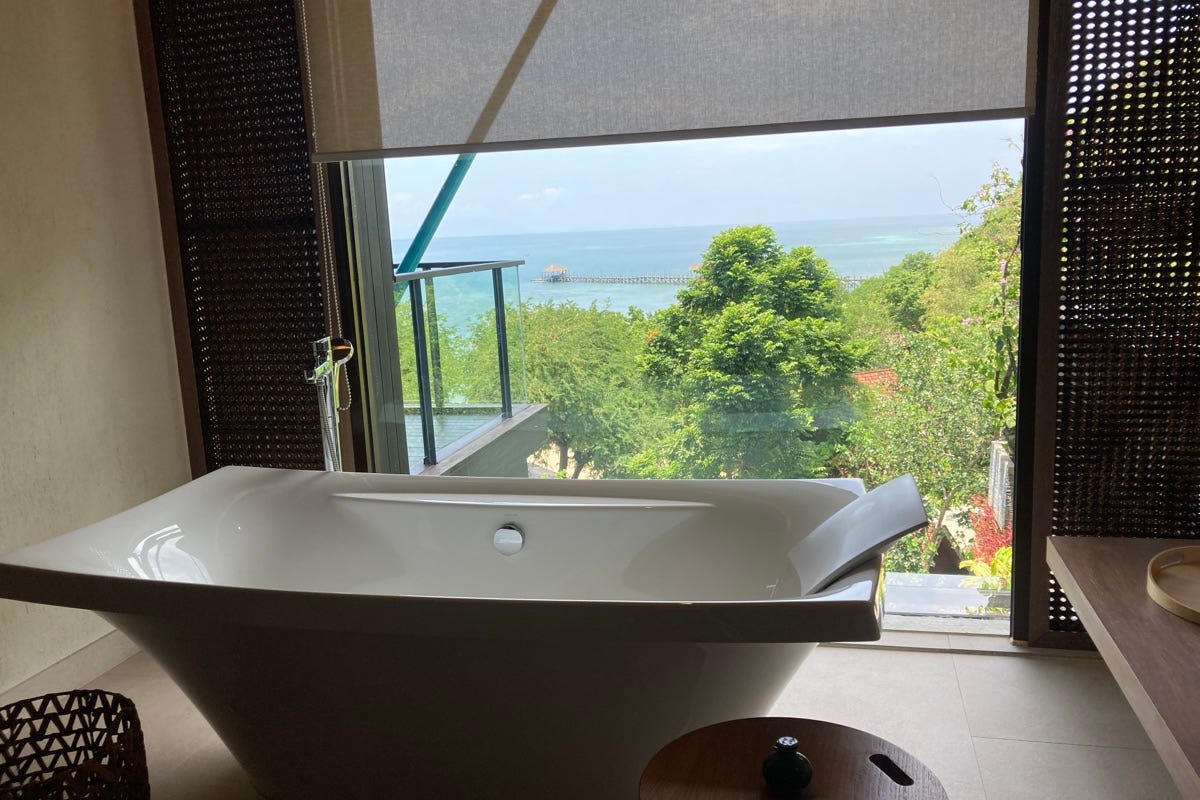In late June, news outlet Kompas reported on an increase in admission fees for Komodo National Park. Commencing August 1, 2022, the fee will increase to US$260 (3.75m rupiah) per head, with no word on a lower rate for Indonesians. This represents an increase from the current 150,000 rupiah (5,000 rupiah for Indonesians). The argument presented for the increase is “conservation” and talking heads are at pains to describe it as a conservation fee which will be valid for a year of entries—not an entrance ticket.
This is but one of many suggested price-changes for the park in recent years. In late 2018 a revised admission of $500 appeared, then, a year later a “membership fee” of US$1,000 did the rounds. Both vanished. Around the same time, talking heads noted the need for the park to attract “high value” tourists. This mantra, common in Indonesia since the 1970s, has played out in a similar fashion in neighbouring countries. Distinguished for railing against backpackers as much as tempting luxury travellers, details are scant. At the time of the $500 fee being thrown around, backpackers were described as “peasants” and the governor of the region encompassing Komodo was quoted as saying the park was for “extraordinary people” and those without the funds should not enter.
How long will these calm waters last? Photo: Stuart McDonald.
Komodo was inscribed as a World Heritage Site in 1991 under two criteria. Criterion vii: To contain superlative natural phenomena or areas of exceptional natural beauty and aesthetic importance; and Criterion x: To contain the most important and significant natural habitats for in-situ conservation of biological diversity, including those containing threatened species of outstanding universal value from the point of view of science or conservation.
It is worth quoting UNESCO’s description of how the park satisfies these points at length.
Criterion (vii): Komodo National Park is a landscape of contrasts between starkly rugged hillsides of dry savanna, pockets of thorny green vegetation, brilliant white sandy beaches and blue waters surging over coral, unquestionably one of the most dramatic landscapes in all of Indonesia. Demonstrating exceptional natural beauty that is all the more remarkable as a counterpoint to the dominant lushness of vegetation which characterizes vast areas of forested Indonesia, and with which most of the world associates the archipelago.
Criterion (x): Komodo National Park contains the majority of the world’s areas in which wild populations of the Komodo dragon lizard still exist. The largest and heaviest of the world’s lizards, the species is widely known for its impressive size and fearsome appearance, its ability to effectively prey on large animals, and a tolerance of extremely harsh condition.
Fast forward a couple of decades and the 2020 IUCN World Heritage Outlook notes the conservation outlook for Komodo is one of “Significant Concern.” UNESCO meanwhile in 2021, while noting some progress, notes their concern about “different tourism infrastructure projects undertaken and planned in the property,” and then, in the next paragraph, notes “Also urges the State Party to halt all tourism infrastructure projects in and around the property that have the potential to impact on its OUV until the revised EIA is submitted and reviewed by IUCN.”
Angel Island looking not so angelic. (This island is outside the park boundaries). Photo: Stuart McDonald.
In a more detailed letter, they requested information regarding a re-zoning of the park in 2020 which resulted in a decrease of the wilderness zone to one-third of the previous area, reported new legislation that would exempt infrastructure works in the property from the obligation of undergoing an EIA, and a new tourism target of some 500,000 people per annum (page 254).
If you missed the memo, Rinca Island has been closed for some time while some sort of “Komodo arena” is constructed. A photo of a Komodo dragon facing down a construction truck went viral on social media at the time. Plans are also afoot for tourism developments on both Padar and another island within the park boundaries. Details are scant, but it seems UNESCO (and domestic conservation groups) are less than thrilled, the concerns are widespread.
One of the construction sites on UNESCO’s shitlist, this on Rinca. Via Google Maps.
This brings me back to the mooted US$260 conservation charge. Part and parcel with this increase is a cap on visitors to the park of no more than 200,000 people—despite UNESCO asking about a rumoured 500,000. The only time Komodo has surpassed this number (officially) was in 2019, when 221,703 visitors entered the park. Thanks to Covid, this plummeted to around 50,000 in 2020. Given the increase in admission, it would be fair to assume that the chances of reaching 200,000 entries anytime soon are unlikely.
It is important to clarify something at this point. In practice, Komodo has two fields of touristic appeal. There is the terrestrial part of the park, which encompasses Komodo, Rinca and Padar. These are where you see the dragons, or in the case of Padar, climb to a viewpoint. The second field is the marine part of the park, which is home to some of the best diving on the planet.
The park is lovely. Photo: Stuart McDonald.
The primary point of access to Komodo is Labuan Bajo. Permanently settled only in the 1950s by three Bajo families, it saw explosive growth since 2007, with its population reaching 52,000 by 2014. Recently named one of Indonesia’s “New Balis,” and buoyed by massive investment, you wouldn’t know it by looking at some facts and figures. In 2015 80% of Labuan Bajo’s population lived below the Indonesian poverty line, more than a quarter had more than five children and only 24% had access to piped water. The city was recently described by NGO Swiss Contact as being at the “tipping point.”
In the department of tipping, an airport expansion in 2015 raised capacity from 150,000 to 1,500,000. A planned second upgrade will increase capacity to four million passengers per year. If only 200,000 people will be allowed into the park per year, I’m curious what the other 3,800,000 will do. I reckon they should hit Dapur Tara.
Train them young and they’ll return again and again—if they can afford it. Photo: Stuart McDonald.
Tourism is viewed as Labuan Bajo’s only sizeable industry and it is a considerable employer, with the dive industry forming an important sector. In early 2022 I had a number of conversations with dive shop managers and owners about the effect of the pandemic. Foreign-focused shops noted 95% of their business was foreign divers, and for them, the pandemic had been brutal. Locally-focused shops were not hit as hard, but business was far from plain sailing. When I asked about staff sourcing, all operators sourced significant numbers from the local community and elsewhere in Flores. Conditions are not always ideal though, writes Swiss Contact:
“The dominance of small and medium sized businesses creates a divers business environment on the one hand. On the other hand it comes along with a high degree of non-compliance with Indonesian labour regulations. The staff is in many cases dependent on employers’ goodwill, which is not sufficient to guarantee decent working conditions and social security.”
Some form of tourism/vocational training exists in both Labuan Bajo and Ruteng (a provincial capital to the east), but migrant labour remains a common stop-gap. The prime market for both graduates and migrants is Labuan Bajo—even if the conditions are not great.
Got the promenade sorted, piped water … not so much. Photo: Stuart McDonald.
Many of the favoured dive sites are within the park’s marine boundaries yet operators often only dive—they don’t visit the dragons. If the $260 charge extends to dive operations, what dampening effect will that have on the trade? Will job losses result as operators go belly up—that doesn’t seem like a stretch.
There’s no denying that pre-pandemic the park had overcrowding issues. At the Batu Bolong dive site for example, in 2017 and 2018 it averaged 500 divers per day—a level characterised to me by dive shop managers as “excessive.” This led to a WWF-led carrying capacity study which set an allocative limit of two dive boats per hour. Operators know that their business relies on the dive experience being a good one—I didn’t speak to an operator who didn’t support the Batu Bolong exercise.
Above the surface though, challenges remained unaddressed. In 2019, the viewpoint on Padar attracted 400 to 600 hikers per day, and a study found considerable trash on the trail, with cigarette butts representing over 30% of the total. Only one garbage bin is on site. Sometimes simple and affordable solutions—like more bins—exist.
Why the hell would you want to model this on Bali? Photo: Stuart McDonald.
To the dragons themselves, repeated studies have found that the primary issue revolves around the roll-on effects of waste practices. Disposal of kitchen scraps and other waste around the ranger stations has led to dragons congregating around there. This in turn has resulted in exposure to large numbers of tourists, and the Komodo dragons have been found to exhibit less wariness, greater body mass, and other altered behaviours. On Rinca, frequent tourist visits deterred natural prey species such as water buffalo and feral pigs, while crab-eating macaques, being more familiar with humans, were not deterred and became the Komodo dragons’ second largest food source.
In the 1990s rangers used to stake live goats to guarantee sightings for tourists, but when this practice ceased dragon numbers dropped and within two years some 30% of tourists saw no Komodo dragons at all. Assuming the waste situation is addressed and the dragons head back to the woods, how many people will be up for paying US$260 for a 30% chance of not seeing a dragon?
When a promenade can’t even meet up with a bridge, one does wonder. Photo: Stuart McDonald.
The answer perhaps lies in Rinca. In conversations in Labuan Bajo, I was repeatedly told that the long-term plan was for Rinca and its “zoo” to be the focal point for tourism. Komodo, on the other hand, would be reserved for “scientific research”. Yet if the setting on Rinca is to be in a zoo-like amphitheatre, where does that stand on the authenticity stakes? You can have that experience in one of Bali’s dire zoos. In this context, it is hard to see the logic of the current stance.
If the authorities want to limit numbers in the park, there is a straightforward solution to this. Regardless of the price, limit the number of tickets available. Setting a stratospheric price while capping the number of allowed visitors at a near all-time high level, seems disingenuous in the extreme. According to Cole, past governing Regencies had form, noting that in 2012 there were 219 cases involving misuse or embezzlement of some US$3.2 million from state budgets.
The bathroom at this joint was bigger than Will and my room lol. Photo: Stuart McDonald.
No doubt, given the ongoing construction of luxurious hotels outside the park confines, there will be some demand for people willing to pay US$260 to enter the park. After all, if you’re paying around $1,000 a night what is a couple of hundred bucks more? But for the vast majority of us, those who are not in a position to pay this kind of money, the question begs, why visit Labuan Bajo at all? What will happen to all the guesthouses, hostels and budget hotels when the primary attractions—the diving and the Komodo dragons—are beyond the budget of most of their guests?
How many of those small hotels, cafes and restaurants in Labuan Bajo are locally owned? How many of the five-star hotels are? Swiss Contact reported that in 2016 two-thirds of the tourism-related businesses in Labuan Bajo were not owned by Floresians, though 40% were Indonesian-owned. What do the local people own and run? Budget accommodation and tour operations (page 16). Who will feel the pain as the destination is forced to pivot to the high-end?
Someone has to pay it seems.
Couchfish is 100 per cent independent and reader-supported. If you’re not already a subscriber, and you’d like to show your support, become a paying subscriber today for just US$7 per month—you can find out more about Couchfish here—or simply share this story with a friend.
Don’t forget, you can find the free podcasts on Apple, Pocket Casts and Spotify as well as right here on Couchfish.


